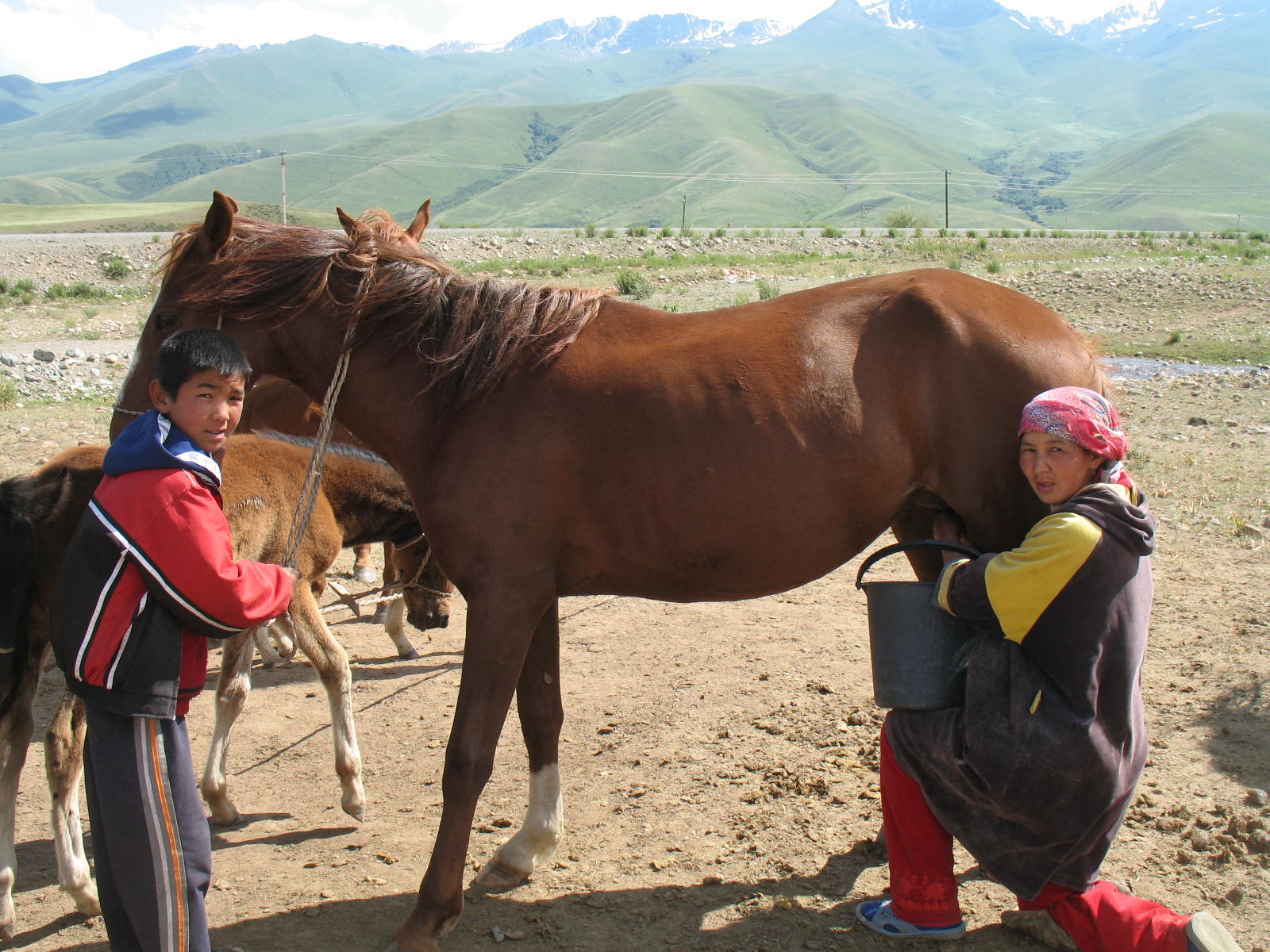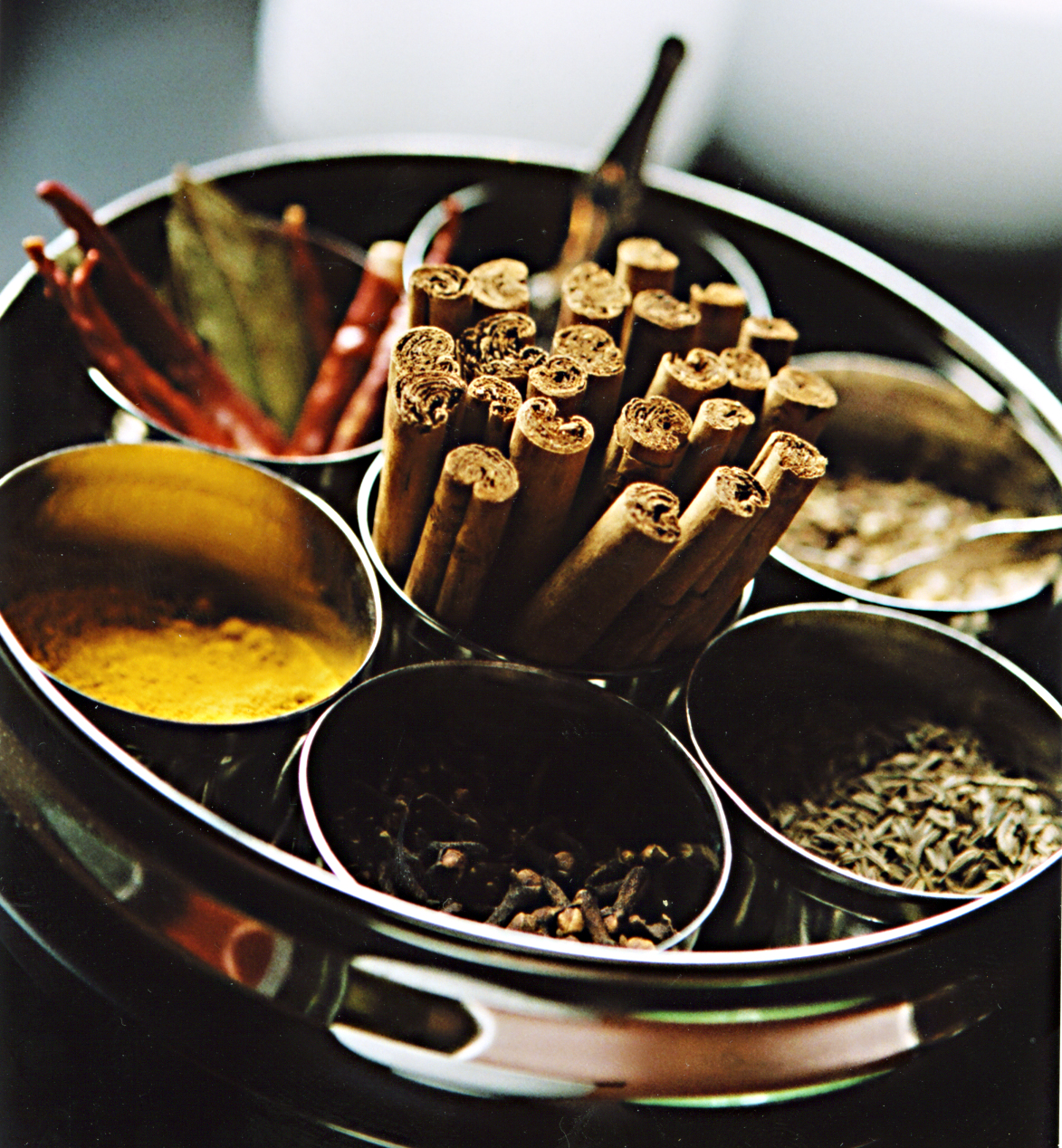|
Suutei Tsai
Suutei tsai ( mn, сүүтэй цай, ), is a traditional Mongolian beverage. The drink is also known as süütei tsai, tsutai tsai, or Mongolian salty tea. Preparation The ingredients to suutei tsai are typically water, milk, tea leaves and salt. A simple recipe might call for one quart of water, one quart of milk, a tablespoon of green tea, and one teaspoon of salt. But the ingredients often vary. Some recipes use green tea while others use black tea. Some recipes even include butter or fat. Milk in Mongolia is typically fresh, whole milk, and using half milk and half cream instead of only processed milk produces a rich beverage close to the authentic. The amount of salt in the tea is also often varied. Another common addition to suutei tsai is fried millet. The way of preparing the drink can also vary. The traditional way of cooking it includes stirring it by scooping it up while it is boiling and pouring it back in from a height. However, many today omit this step.Mongol ... [...More Info...] [...Related Items...] OR: [Wikipedia] [Google] [Baidu] |
Hohhot
Hohhot,; abbreviated zh, c=呼市, p=Hūshì, labels=no formerly known as Kweisui, is the capital of Inner Mongolia in the north of the People's Republic of China, serving as the region's administrative, economic and cultural center.''The New Encyclopædia Britannica'', 15th Edition (1977), Vol. I, p. 275. Its population was 3,446,100 inhabitants as of the 2020 census, of whom 2,944,889 lived in the metropolitan area consisting of 4 urban districts (including Hohhot Economic and Development Zone) plus the Tümed Left Banner. The name of the city in Mongolian means "Blue City", although it is also wrongly referred to as the "Green City."Perkins (1999), p. 212. The color blue in Mongol culture is associated with the sky, eternity and purity. In Chinese, the name can be translated as ''Qīng Chéng'' () The name has also been variously romanized as Kokotan, Kokutan, Kuku-hoton, Huhohaot'e, Huhehot, Huhot, or Köke qota. The city is a seat of the Inner Mongolia University, th ... [...More Info...] [...Related Items...] OR: [Wikipedia] [Google] [Baidu] |
Millet
Millets () are a highly varied group of small-seeded grasses, widely grown around the world as cereal crops or grains for fodder and human food. Most species generally referred to as millets belong to the tribe Paniceae, but some millets also belong to various other taxa. Millets are important crops in the semiarid tropics of Asia and Africa (especially in India, Mali, Nigeria, and Niger), with 97% of millet production in developing countries. This crop is favored due to its productivity and short growing season under dry, high-temperature conditions. Millets are indigenous to many parts of the world. The most widely grown millets are sorghum and pearl millets, which are important crops in India and parts of Africa. Finger millet, proso millet, and foxtail millet are also important crop species. Millets may have been consumed by humans for about 7,000 years and potentially had "a pivotal role in the rise of multi-crop agriculture and settled farming societies." Descript ... [...More Info...] [...Related Items...] OR: [Wikipedia] [Google] [Baidu] |
William Of Rubruck
William of Rubruck ( nl, Willem van Rubroeck, la, Gulielmus de Rubruquis; ) was a Flemish Franciscan missionary and explorer. He is best known for his travels to various parts of the Middle East and Central Asia in the 13th century, including the Mongol Empire. His account of his travels is one of the masterpieces of medieval travel literature, comparable to those of Marco Polo and Ibn Battuta. Mission William was born in Rubrouck, Flanders. In 1248, he accompanied King Louis IX of France on the Seventh Crusade. On 7 May 1253, on Louis' orders, he set out on a missionary journey to convert the Tatars to Christianity. He first stopped in Constantinople to confer with Baldwin of Hainaut, who had recently returned from a trip to Karakorum, the capital of the Mongol Empire, on behalf of Baldwin II, Latin Emperor. There, William received letters to some of the Tatar chiefs from the emperor. William then followed the route of the first journey of the Hungarian Friar Julian, and in ... [...More Info...] [...Related Items...] OR: [Wikipedia] [Google] [Baidu] |
Kumis
''Kumis'' (also spelled ''kumiss'' or ''koumiss'' or ''kumys'', see other transliterations and cognate words below under terminology and etymology – otk, airag kk, қымыз, ''qymyz'') mn, айраг, ''ääryg'') is a fermented dairy product traditionally made from mare milk or donkey milk. The drink remains important to the peoples of the Central Asian steppes, of Turkic and Mongol origin: Kazakhs, Bashkirs, Kalmyks, Kyrgyz, Mongols, and Yakuts. Kumis was historically consumed by the Khitans, Jurchens, Hungarians, and Han Chinese of North China as well. ''Kumis'' is a dairy product similar to ''kefir'', but is produced from a liquid starter culture, in contrast to the solid ''kefir'' "grains". Because mare's milk contains more sugars than cow's or goat's milk, when fermented, ''kumis'' has a higher, though still mild, alcohol content compared to ''kefir''. Even in the areas of the world where ''kumis'' is popular today, mare's milk remains a very limited commod ... [...More Info...] [...Related Items...] OR: [Wikipedia] [Google] [Baidu] |
Boortsog
Boortsog or bawïrsaq ( ba, бауырһаҡ, kk, бауырсақ; baýyrsaq , ky, боорсок , mn, боорцог , uz, boʻgʻirsoq , tr, kabarcık, pişi, bişi, tuzlu lokma, halka, tk, pişme) is a type of fried dough food found in the cuisines of Central Asia, Idel-Ural, Mongolia and the Middle East. It is shaped into either triangles or sometimes spheres. The dough consists of flour, yeast, milk, eggs, butter, salt, sugar, margarine. Tajik boortsog are often decorated with a criss-cross pattern by pressing the bottom of a small strainer on the dough before it is fried. Boortsog is often eaten as a dessert, with syrup or jam or honey. They may be thought of as cookies or biscuits, and since they are fried, they are sometimes compared to doughnuts. Mongolians and Turkic peoples sometimes dip boortsog in tea. In Central Asia, baursaki are often eaten alongside chorba. Uštipci ( sr-cyr, Уштипци, ) are doughnut-like fried dough balls popular in Bosnia an ... [...More Info...] [...Related Items...] OR: [Wikipedia] [Google] [Baidu] |
Mongolian Cuisine
Mongolian cuisine predominantly consists of dairy products, meat, and animal fats. The most common rural dish is cooked mutton. In the city, steamed dumplings filled with meat—"buuz"— are popular. The extreme continental climate of Mongolia has influenced the traditional diet. Use of vegetables and spices are limited. Due to geographic proximity and deep historic ties with China and Russia, Mongolian cuisine is also influenced by Chinese and Russian cuisine.Marshall Cavendish Corporation, 2007, p. 268 History Details of the historic cuisine of the Mongolian court were recorded by Hu Sihui in the '' Yinshan Zhengyao'', known to us from the 1456 Ming Dynasty edition manuscript, also surviving in fragments from the Yuan dynasty. Presented to Tugh Temür in 1330, at the height of Mongol power and cultural influence, the Yinshan Zhengyao is a product of the cultural exchange (notably with the Islamic heartland in Mongol Iran) that enriched the Mongol Empire. Food scholars ... [...More Info...] [...Related Items...] OR: [Wikipedia] [Google] [Baidu] |
Butter Tea
Butter tea, also known as ''po cha'' (, "Tibetan tea"), ''cha süma'' (, "churned tea"), Mandarin Chinese: ''sūyóu chá'' ( 酥 油 茶) or ''gur gur cha'' in the Ladakhi language, is a drink of the people in the Himalayan regions of Nepal, Bhutan, India (particularly in Ladakh, Sikkim, and Arunachal Pradesh), Pakistan especially in Gilgit-Baltistan, Tibet and Western regions of modern-day China and the Caribbean. Traditionally, it is made from tea leaves (usually Pu’er tea leaves), yak butter, water, and salt, although butter made from cow's milk is increasingly used, given its wider availability and lower cost. Butter tea likely originated in the Himalayan region between Greater Tibet and the Indian subcontinent. History The history of tea in Tibet dates back to the 7th century during the Tang dynasty. However, butter tea did not become popular in Tibet until about the 13th century, the time of the Phagmodrupa dynasty. According to legend, a Chinese princess married a ... [...More Info...] [...Related Items...] OR: [Wikipedia] [Google] [Baidu] |
Masala Chai
Masala chai (, ; Urdu: مصالحہ چائے, Hindi: मसाला चाय) is an Indian tea culture, Indian tea beverage made by boiling black tea in milk and water with a mixture of aromatic herbs and spices. Originating in India the beverage has gained worldwide popularity, becoming a feature in many coffeehouse, coffee and tea houses. The term ''chai'' originated from the Hindi word ''chai'', which was derived from the Chinese language, Chinese word for tea, . In English, this spiced tea is commonly referred to as ''masala chai'', or simply ''chai'', even though the term refers to tea in general in the original language. According to stories, it originates from thousands of years ago in now modern India and said that the king created masala chai as an Ayurveda, Ayurvedic beverage - a blend of herbs and spices to drink for healing purposes. Chai has become a popularized item in western culture, with numerous coffee houses using the term chai latte or chai tea latte for th ... [...More Info...] [...Related Items...] OR: [Wikipedia] [Google] [Baidu] |
Buryat Cuisine
Buryat Cuisine is the traditional cuisine of the Buryats, a Mongolic people who mostly live in the Buryat Republic and around Lake Baikal in Russia. Buryat cuisine shares many dishes in common with Mongolian cuisine and has been influenced by Soviet and Russian cuisine. Common Dishes Most dishes are lamb or beef based but fish dishes are common especially around Lake Baikal. There are also a number of dairy products made by the Buryats. Buryat cuisine is simple and hearty with very little spice. The Buryats like the Mongols are known for their Buuz, a type of steamed dumpling. Popular Buryat foods * Buuzy (Бузы) also known as Pozy or Buuz in Mongolia, are meat filled steamed dumplings usually filled with a mixture of either lamb or beef with onions. * Buchler (Бучлер) is a lamb soup with hand cut noodles and potatoes. * Shulep (Шулэн) is a mutton soup with egg noodles and sometimes dumplings. * Bukhelor (Бухел) is a spiced meat and vege ... [...More Info...] [...Related Items...] OR: [Wikipedia] [Google] [Baidu] |
Tuvan Cuisine
Tuvan or Tuvinian can refer to: *Of or pertaining to Tuva, a federal subject of Russia **Tuvans or Tuvinians, a Turkic ethnic group living in southern Siberia **Tuvan language, also known as Tuvinian, Tyvan or Tuvin, a Turkic language spoken in the Republic of Tuva **Tuvan throat singing, a singing technique where one can sing in two tones at the same time *Tuvan syndrome, a fictional malady in the ''Star Trek'' episode "Inter Arma Enim Silent Leges" (''Star Trek: Deep Space Nine'') See also *Tyvan, Saskatchewan Tyvan is an unincorporated community in the Rural Municipality of Wellington No. 97, Saskatchewan, Canada. It is located on Highway 33, approximately 79 km southeast of the City of Regina. It previously held the status of a village until J ... {{disambig Language and nationality disambiguation pages ... [...More Info...] [...Related Items...] OR: [Wikipedia] [Google] [Baidu] |
Kalmyk Cuisine
Kalmyk ( xal-RU, Хальмг, Xaľmg), "Kalmuck", "Kalmuk", or "Kalmyki"' may refer to: * Kalmyk people or Kalmyks, a group of western Mongolic people *Kalmyk language, the language of the Kalmyk people * Kalmykia, a Russian republic *Kalmyk Khanate, a historic state *Kalmyk cattle, beef cattle breed originating with Kalmyk people *Kalmyk horse, horse breed originating with the Kalmyk people See also *Operation Kalmyk In February 2012, during evidence to the Leveson Inquiry into the culture, practice and ethics of the British press, Metropolitan Police Deputy Assistant Commissioner Sue Akers mentioned the existence of Operation Kalmyk, a new investigation rela ..., a 2012 British police operation {{Disambiguation Language and nationality disambiguation pages ... [...More Info...] [...Related Items...] OR: [Wikipedia] [Google] [Baidu] |






